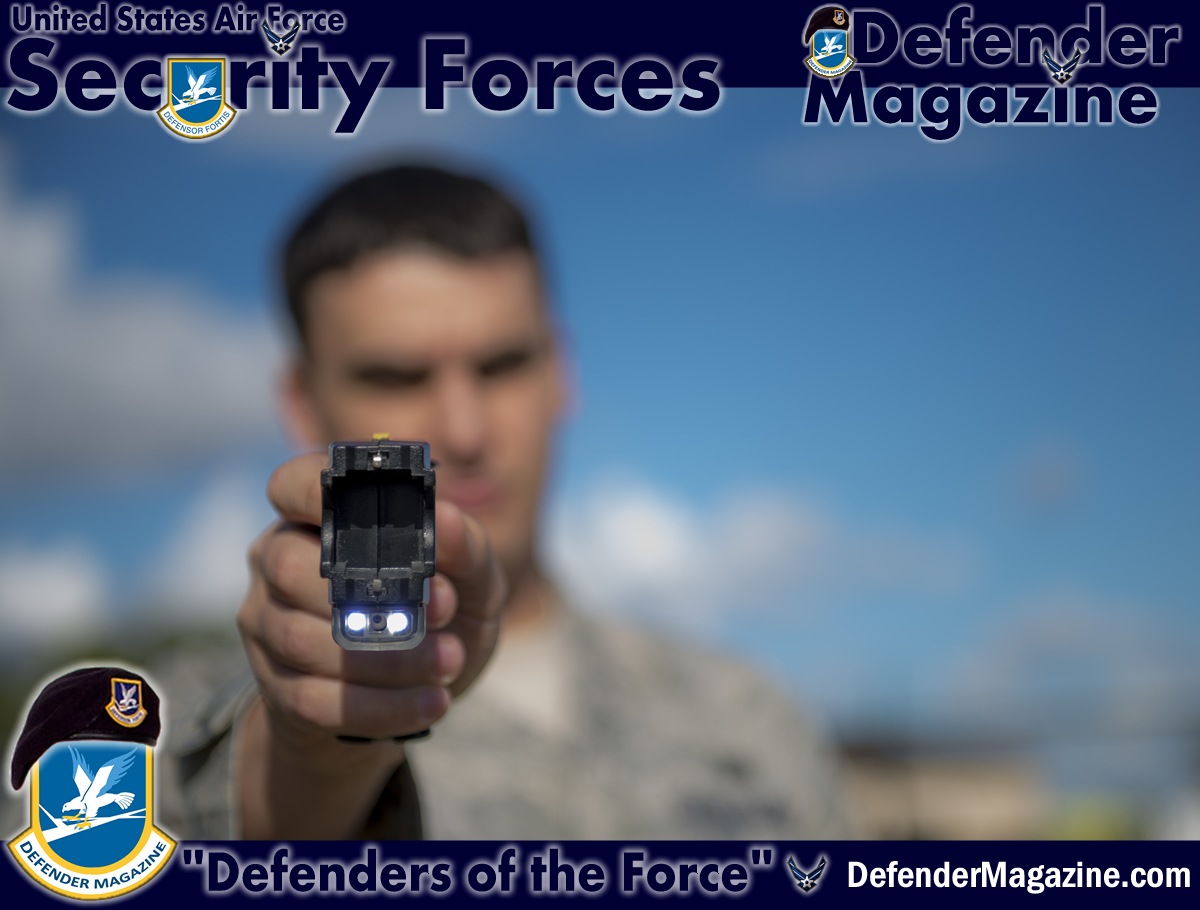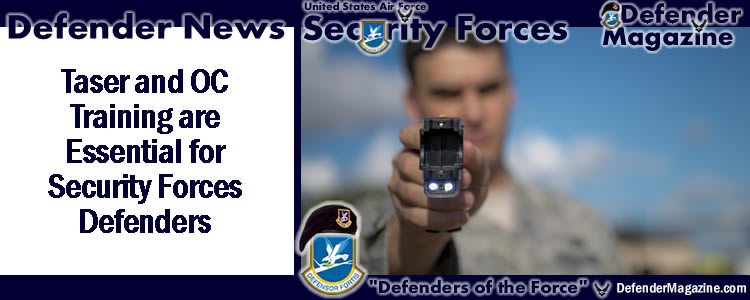12/11/2014 – MOODY AIR FORCE BASE, Ga. —
“This will be the longest five seconds of your life.”
Nervous and sweating, a young Airman steps up for his turn. His eyes are glued shut, hands clenched with fear, when he hears, “Bring on the pain.”
A 5,000-watt current sears through his body within a few seconds. He says the pain feels like pliers constantly squeezing his muscles.
He quickly falls to his knees and lies on the grassy field, unable to move.
This Airman was one of four who participated in less-than-lethal combatives training at the 23d Security Forces Squadron.
U.S. Air Force Staff Sgt. Israel Garza, 23d Security Forces Squadron combatives instructor, taught a two-part course at his squadron. The course consisted of an instructional briefing and hands-on training.
“When you’re on-duty your life is at stake, so we equip our [Airmen] with every tool available to de-escalate any situation and hopefully everybody gets to go home safe,” said Garza.
Garza teaches security forces Airmen how to use their equipment and the precautions to take with less-than-lethal engagement.
“I ask every one of my trainees after employment ‘Now that you have experience with the Taser, if you ever had to employ it do you feel like it could save your life?’ because this training is all about putting yourself in perspective of the aggressor.”
According to Garza, the Taser has prevented situations from escalating to deadly force in over 75,000 cases, and training the security forces Airmen is essential to this program.
“The Taser causes neuromuscular incapacitation, which can completely immobilize an aggressor for at least five seconds,” said Garza. “This is just enough of a window for us to handcuff them and de-escalate the situation completely and get everybody out of harm.”
Even though one out of 400 Taser employments results in injury, security forces Airmen are trained to utilize the dart-to-heart rule for aiming the weapon and launching its electronic control device darts.
The further an ECD dart is away from the heart, the lower the risk of affecting the heart.
“We avoid shooting the darts in the chest and aim for the lower abdomen and thighs to hopefully get the spray necessary for the Taser to prevent any permanent injuries,” said Garza.
In addition to Taser training, Garza instructs an OC pepper spray course which has the risk of asphyxiation, but Garza said asphyxiation by his trainees is caused by panic.
“It happens all the time in training,” said Garza. “The trainee says he can’t breathe, but it’s usually the panic and mindset that causes that.”
After they are certified with both a Taser and OC spray, Garza recommends his Airmen carry both because neither of them is 100-percent effective alone.
Although Garza has never employed a Taser on duty, he has used the equipment as a deterrent.
“I’ve had to pull out my Taser at traffic stops, but never had to employ it,” said Garza. “It’s a good deterrent, because when somebody sees a Taser pointed at them they back down fast.”
Senior Airman Joseph DiBianca, 23d Security Forces Squadron patrolman, went through both of Garza’s Taser and OC spray courses, and he said he learned everything needed to take down an aggressor without using lethal force.
“For Taser training, being ‘Tased’ isn’t required, but I wanted to know what my subject is going through,” said DiBianca. “It puts me in a better perspective.”
DiBianca and his squadron are the base defenders. They’re in charge of everybody’s safety, and he said less-than-lethal training can help in saving everyone involved in a situation, including the aggressor.
“Our overall goal of these training sessions is to make sure our Airmen can incapacitate an individual from committing any further crime,” said Garza.
by Airman 1st Class Dillian Bamman
23d Wing Public Affairs
U.S. Air Force Senior Airman Joseph DiBianca, 23d Security Forces Squadron patrolman, aims a Taser Dec. 2, 2014, at Moody Air Force Base, Ga. Security Forces Airmen are required to complete Taser and OC pepper spray training as part of less-than-lethal combatives training. (U.S. Air Force photo by Airman 1st Class Dillian Bamman/Released)

